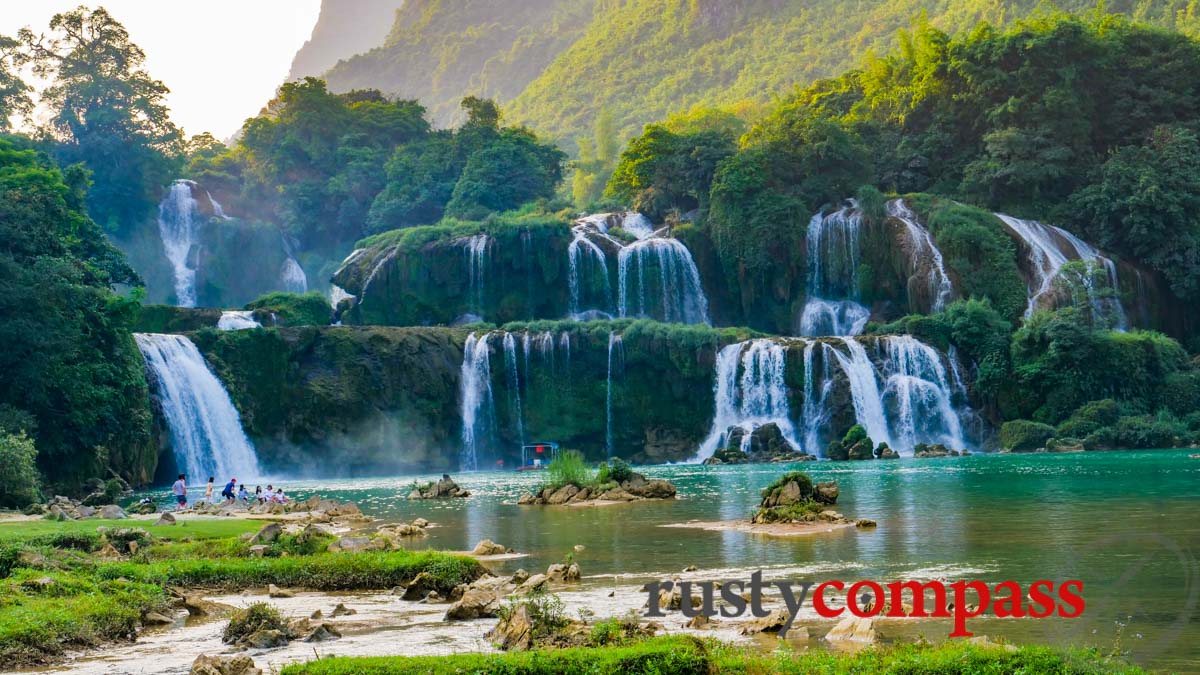
Photo: Mark Bowyer Ban Gioc Waterfall before the rains
One of the fascinating things about travelling in these provinces bordering China, is that they're some of the least developed and most sparsely populated in Vietnam. You might assume that provinces bordering a country of 1.4 billion people might also be densely populated. Not so.
Across the border, the neighbouring Chinese province, Guanxi, has a population of 47 million - half of Vietnam!
The border regions like Cao Bang have been the frontline in Vietnam's centuries of invasions from China. And as recently as 1979, Cao Bang was devastated in a brief bloody border battle, the Battle of Cao Bang. China invaded in 1979 to "punish" Vietnam for its invasion of Cambodia and its war againts Pol Pot's genocidal Khmer Rouge.
Things to do in Cao Bang
Ban Gioc Waterfall
Right on the border with China, Ban Gioc waterfall is the province's signature landmark. Though it's not very well-known. After 3 decades in Vietnam, I only recently made my first visit.
In 2019, I got to see the Ban Gioc transformed across the seasons.
In a way it was most picturesque in the dry season when I first visited.
Just a few weeks later, heavy rains arrived, the rivers feeding the dam from China filled, and the whole area was quickly flooded. The torrents of water are an awesome spectacle but the gentle beauty of the place, found with a lesser flow of water, is lost.
Another few weeks later, the rains had eased just a little, the water over the falls was still a mighty torrent, and the surrounding wet rice fields were glistening.
The southern shore of the Ban Gioc belongs to Vietnam, across to the other side, the northern shore is China, where the falls are known as Detian. The falls were once entirely in Vietnam's territory, but when new borders were agreed in 1999, Ban Gioc became as shared site.
Ban Gioc is still off the radar for most Vietnam travellers - but if you like your landscapes and picturesque villages and towns, Cao Bang Province and Ban Gioc waterfall are well worth including in your plans.
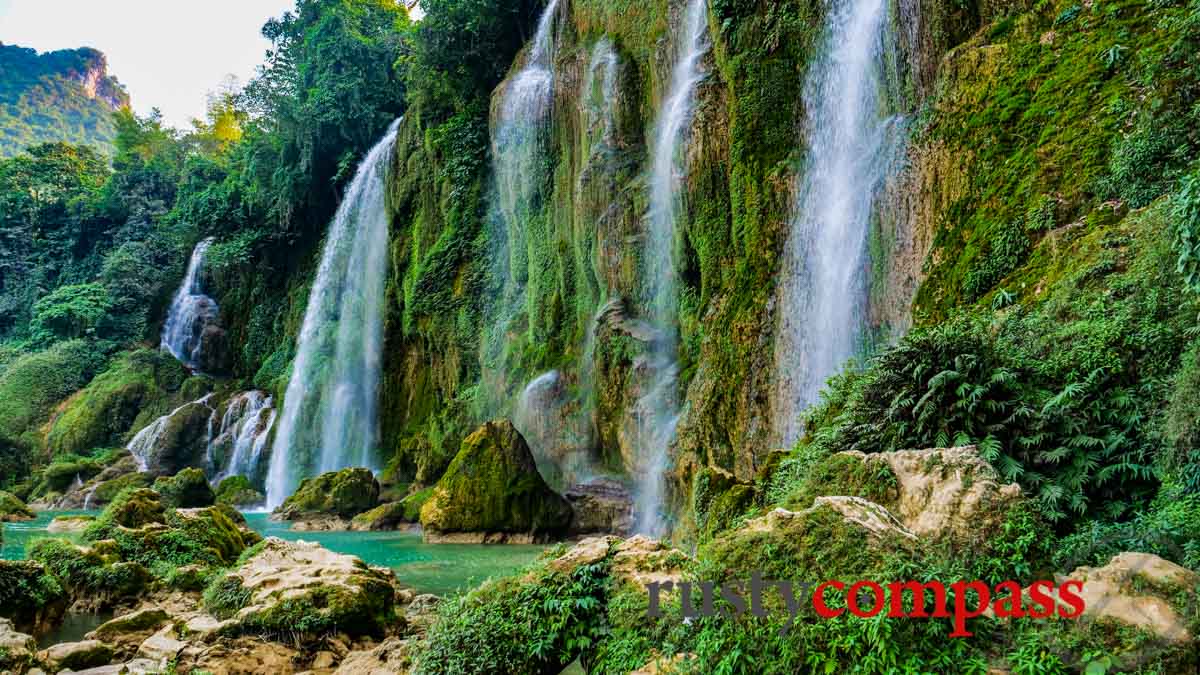
Photo: Mark Bowyer Ban Gioc Waterfall before the rains
Ban Gioc Falls - Getting there and need to know
Ban Gioc is about 80 kilometres from Cao Bang town. The road is good and it will take around 90 minutes by car or motorbike. Public bus will take a little longer with stops. You can also arrive from the east if you're travelling right across the top of Vietnam.
You may get asked for your passport as you enter the falls precinct due to border sensitivity. Tickets are 40k VND with boat trips available at negotiable prices. You probably won't need to spend more than 90 minutes exploring the falls.
For an exceptional view of the falls, head up the mountain nearby to Truc Lam Ban Gioc Pagoda.
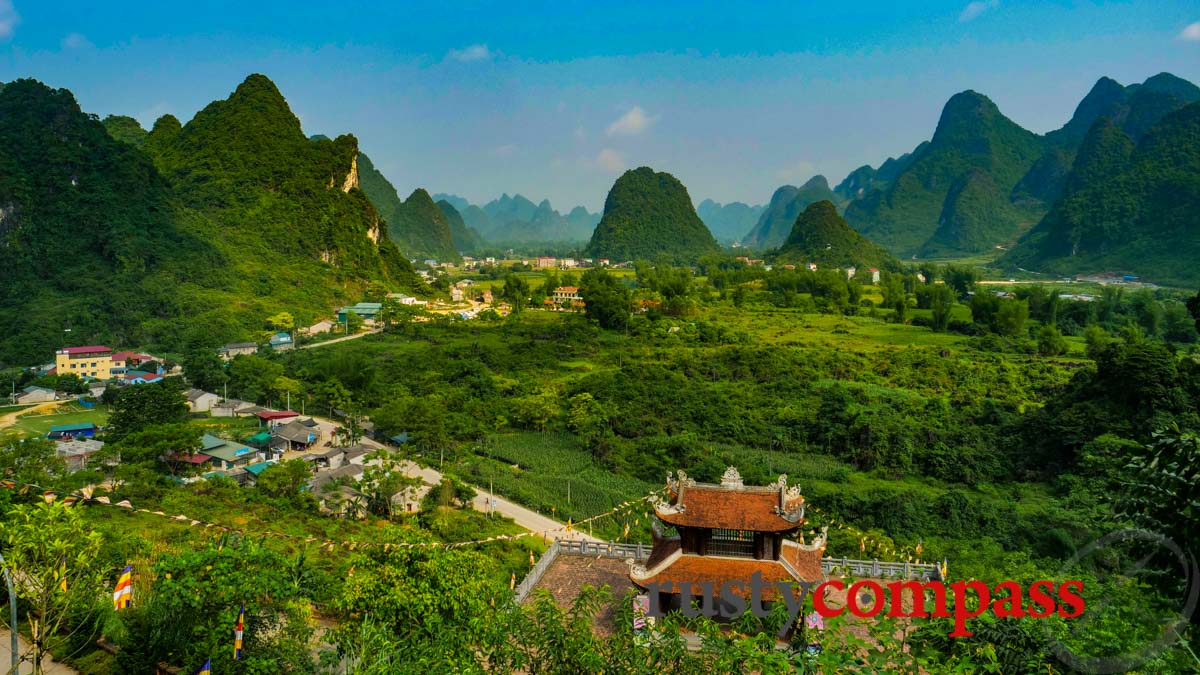
Photo: Mark Bowyer Looking across the border with China - from Truc Lam Ban Gioc Pagoda
Ban Gioc where to stay
There was a hotel construction boom under way during my visits to Ban Gioc in 2019 - which was a tad scary. There would now be an ample supply of newish budget accommodations.
Saigon Ban Gioc Hotel, owned by the Saigon based mega tourism company Saigon Tourist, is probably the best base (though more fancy places looked to be nearing completion mid-2019). Saigon Ban Gioc looks better than it is. Rooms are ok (some a tad mouldy), priced are around $50USD, the setting is green and lush and right by the falls, which is its best feature. You'll likely eat here too. There are a handful of local food stalls around town but no real restaurants.
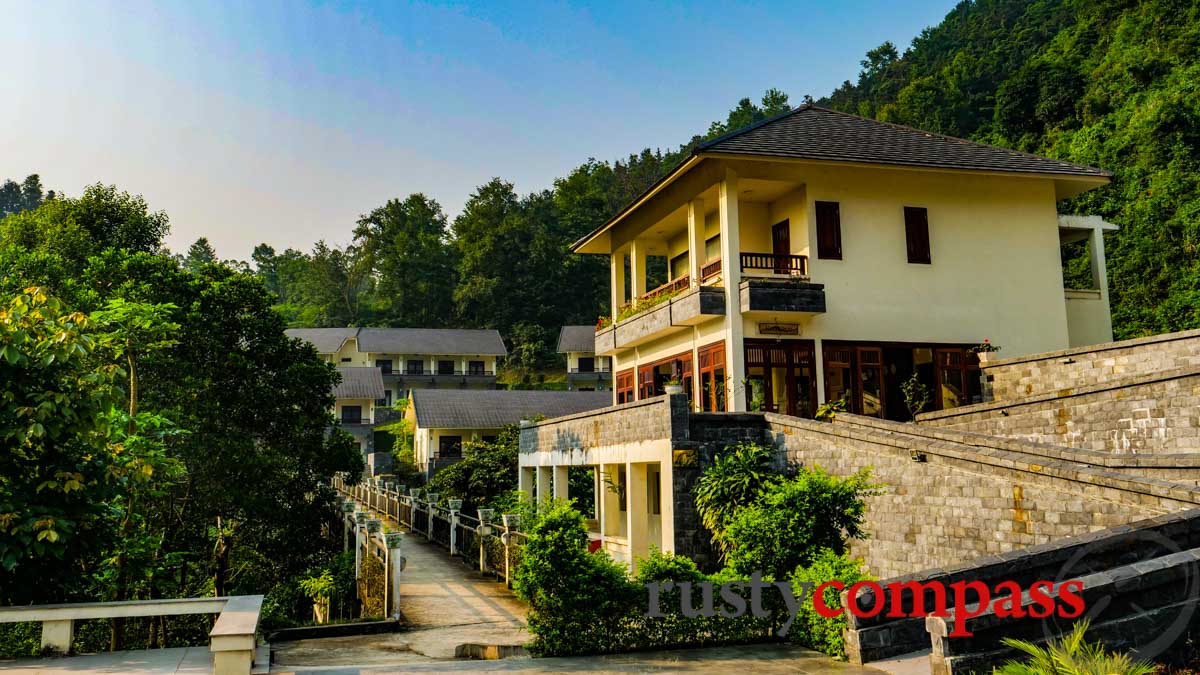
Photo: Mark Bowyer Saigon Ban Gioc Hotel.
Pac Bo Cave
Pac Bo Cave, Ho Chi Minh's base in northern Vietnam following his return from 30 years of travels in 1941, is a national monument. Ho Chi Minh returned to his homeland in the middle of World War II, to take up the struggle against Japanese occupation and independence. His years abroad took him to France, the United States, Russia, China and other countries, developing his nationalist and communist ideas along the way. Ho spent a number of weeks living in hiding in Pac Bo Cave before moving on to assemble his Viet Minh force and commence decades of war for national independence.
Pac Bo is a popular destination for domestic tourists and is dedicated to the memory of Uncle Ho.
I've not visited Pac Bo yet.. But it's easily visited from Cao Bang town.
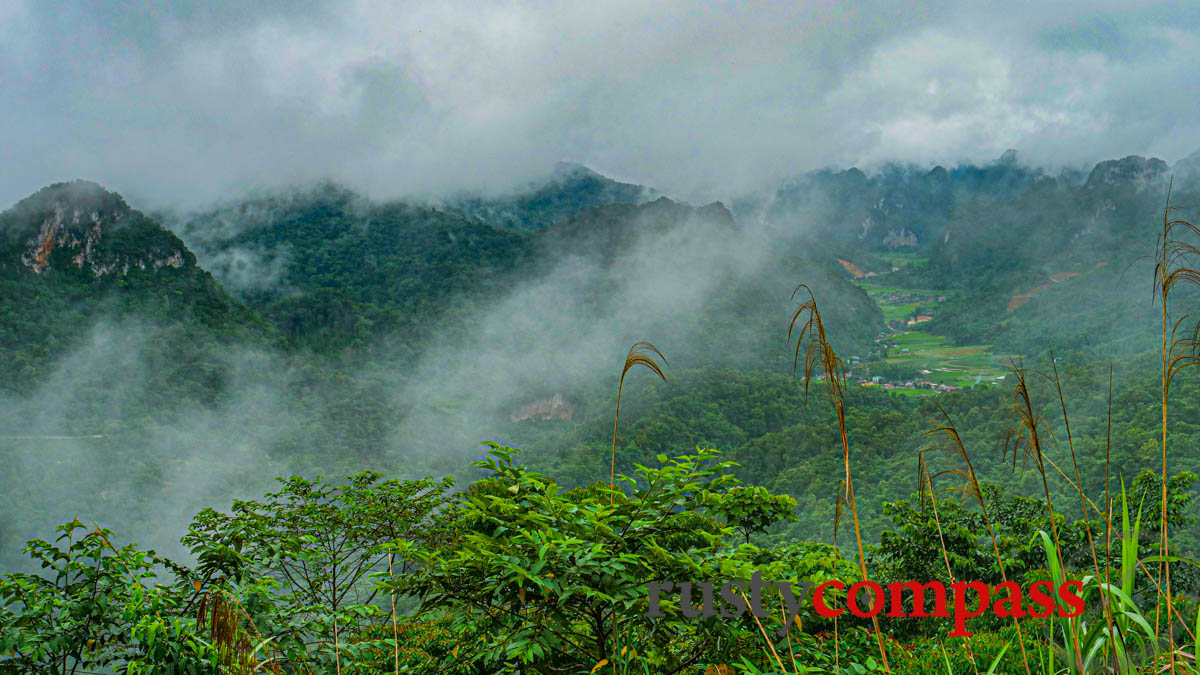
Photo: Mark Bowyer Misty Cao Bang Province
Exploring Cao Bang Province
Cao Bang is one of Vietnam's most picturesque provinces. The mountains, the rice fields, rivers and quaint villages make it a perfect place for improvised walks and motorcycle missions. If you make it to Cao Bang, give it a few days so you're not rushed. You might want to make Cao Bang town your base and head out from there.
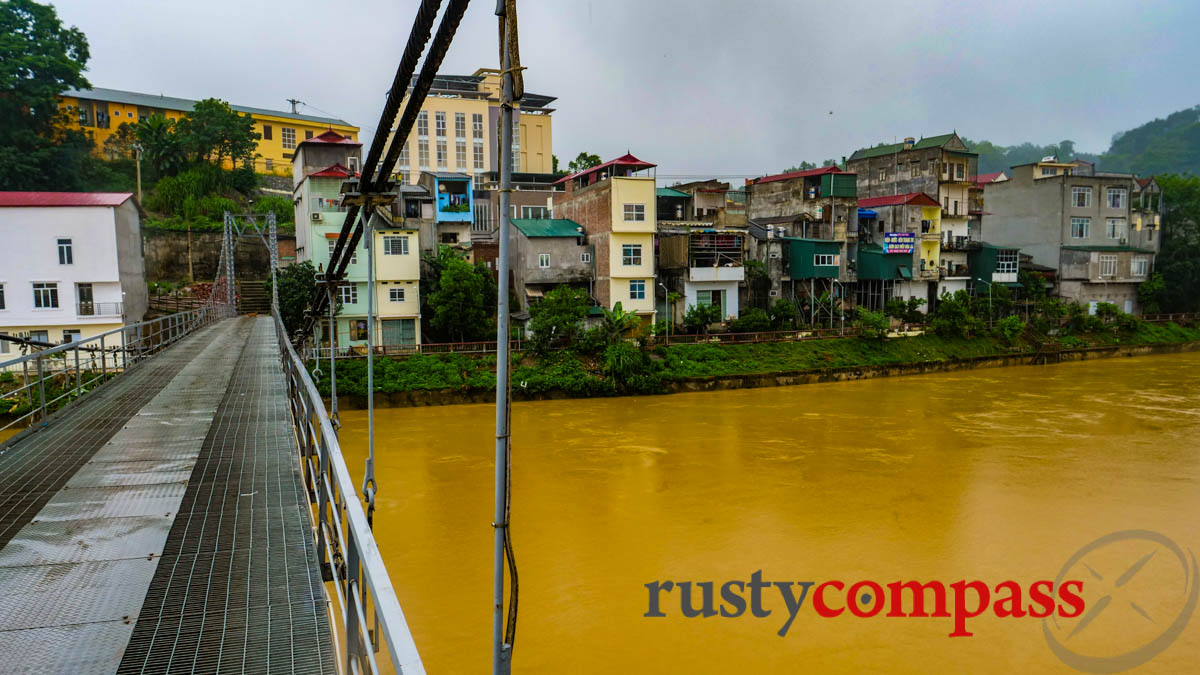
Photo: Mark Bowyer Cao Bang City - the provincial capital
Cao Bang Town
The provincial capital is a fairly unassuming place but it's not bad base for exploration. There's some tasty local food around town and a bunch of places to stay for budget travellers.
The town was levelled in the 1979 Battle of Cao Bang, against Chinese invaders. Vietnamese troops fought bravely against a much larger invasion force.
We stayed at Max Boutique Hotel in Cao Bang, which was around $60US a night. There were cheaper backpacker places around. The Max is on Vuon Cam street which is a good base for food and guest houses. Cao Bang market is nearby.

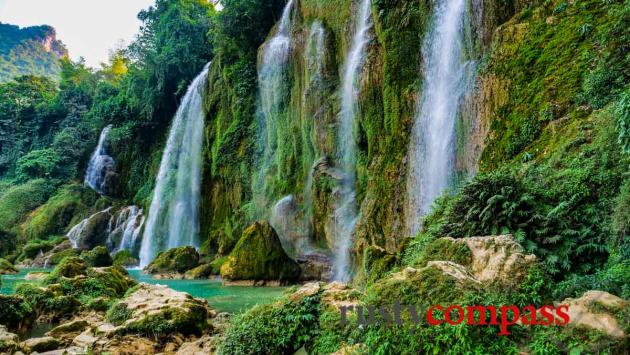
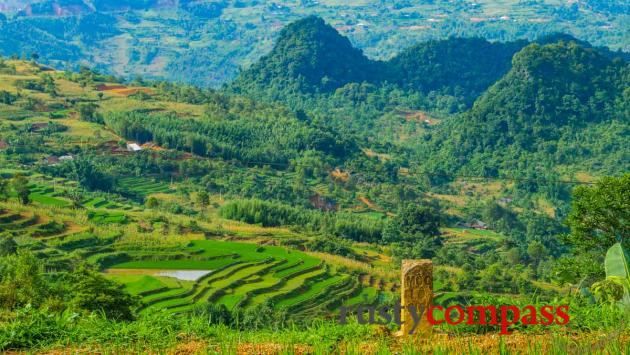
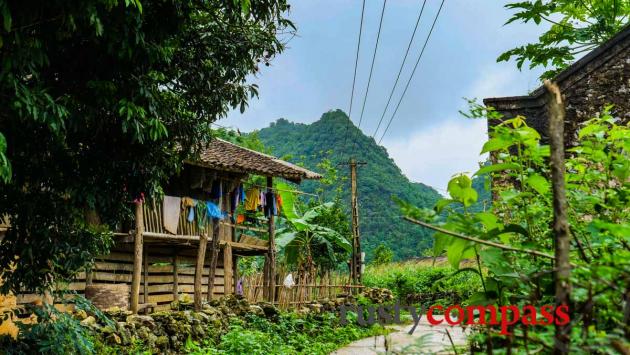
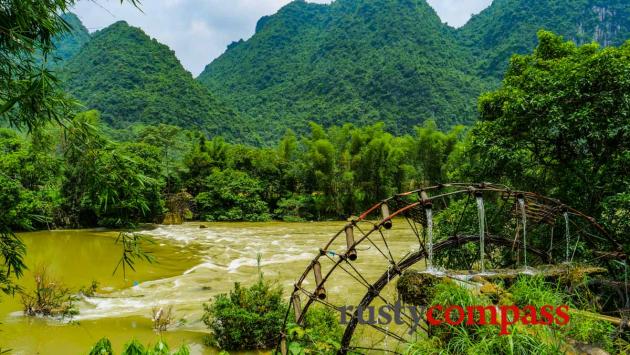
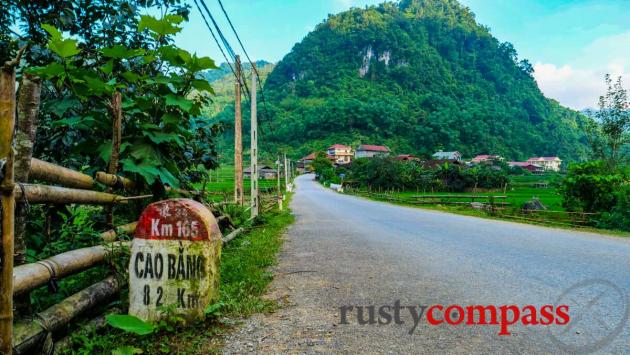
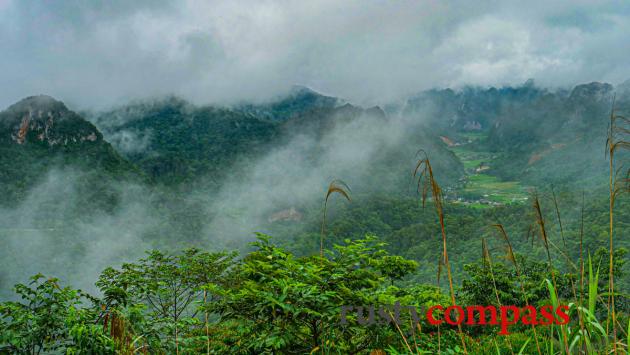
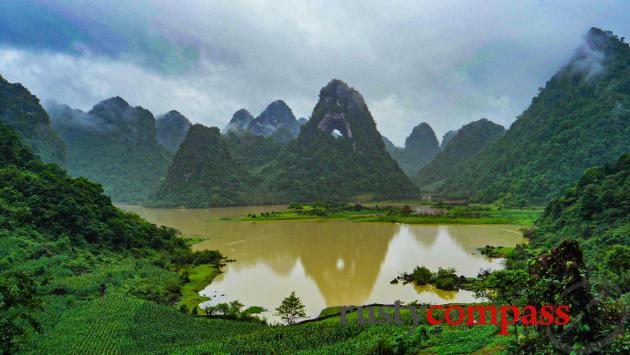
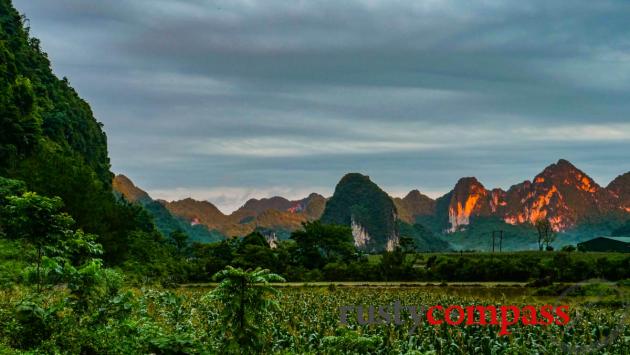
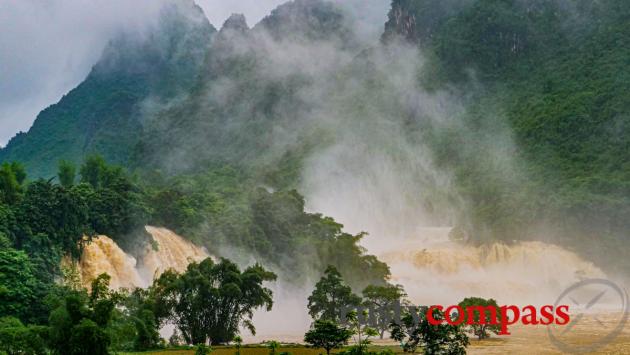


Twitter: @rustycompass
Rusty Compass is an independent travel guide. We’re focused on providing you with quality, unbiased, travel information. That means we don't receive payments in exchange for listings and mostly pay our own way. We’d like tourism to be a positive economic, environmental and cultural force and we believe travellers deserve disclosure from publishers. Spread the word about Rusty Compass, and if you're in Saigon, pop in to The Old Compass Cafe and say hi. It’s our home right downtown on Pasteur St. You can also check out our unique tours of Ho Chi Minh City and Sydney at www.oldcompasstravel.com Make a financial contribution using the link below. Even small amounts make a difference. Thanks and travel well!